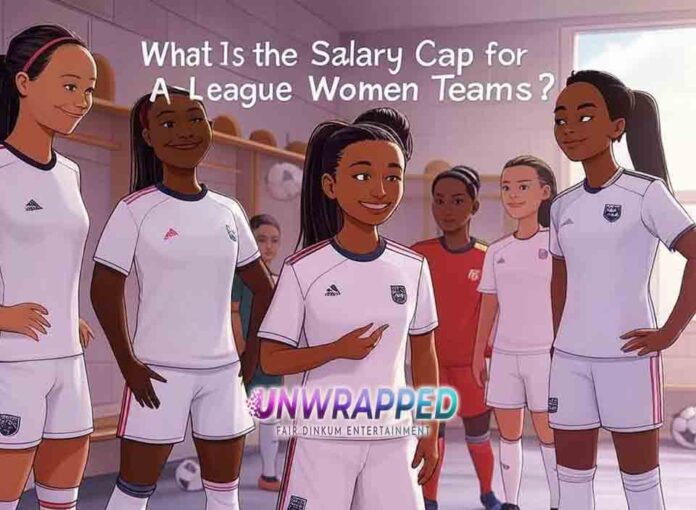The A-League Women, Australia’s premier professional women’s football league, has experienced significant growth in recent years. Central to this development is the evolving financial structure, particularly the salary cap system that governs team expenditures. Understanding the intricacies of the salary cap provides insight into the league’s commitment to fostering competitive balance and promoting the sport’s sustainability.
This article delves into the current salary cap regulations of the A-League Women, tracing their evolution, comparing them to international standards, and discussing the implications for players and the league’s future.
Evolution of the A-League Women Salary Cap
The salary cap in the A-League Women has undergone several adjustments to reflect the league’s growth and the increasing professionalism of women’s football.
- 2015: Teams operated under a salary cap of A$150,000. Player earnings varied significantly, with some receiving minimal compensation.
- 2017–18 Season: A minimum player salary of A$10,000 was introduced, and the overall salary cap was increased to A$300,000.
- 2020–21 Season: The salary floor (minimum total team salary) was set at A$294,000, with plans to incrementally raise it to A$390,000 by the 2025–26 season.
- 2023: The minimum annual player wage was increased to A$25,000, reflecting the league’s commitment to better player compensation.
- 2024: Players were contracted for 35 weeks, covering a 22-round regular season and additional weeks for finals, indicating a move towards longer contracts and greater financial stability.
Current Salary Cap Structure
As of the latest season, the A-League Women has implemented a salary cap system designed to ensure competitive balance while promoting player welfare.
- Salary Cap: The maximum amount a club can spend on player salaries is set at A$600,000.
- Salary Floor: Clubs are required to spend at least A$500,000 on player salaries, ensuring a minimum investment in talent.
- Marquee Player Exemptions: Clubs can sign marquee players whose salaries are exempt from the salary cap, allowing teams to attract high-profile talent without compromising their salary cap.
- Scholarship Players: A minimum salary of A$12,400 has been established for scholarship players, with these salaries excluded from the salary cap to provide clubs with flexibility in nurturing emerging talent.
Comparison with International Leagues
When compared to international women’s football leagues, the A-League Women’s salary structure reflects both its growth and the challenges it faces.
- National Women’s Soccer League (NWSL) – USA: The NWSL has a minimum salary of approximately US$36,000 (around A$56,000) and a maximum of US$200,000 (approximately A$312,000), indicating higher earning potential for players.
- USL Super League – USA: The newly established USL Super League offers a minimum wage of around A$50,000, making it an attractive destination for players seeking better compensation.
These comparisons highlight the competitive landscape of women’s football globally and underscore the importance of continued investment in the A-League Women to retain and attract top talent.
Implications for Players
Despite the positive trajectory in salary increases, many A-League Women players continue to face financial challenges.
- Supplementary Employment: A significant number of players hold secondary jobs to support themselves, with reports indicating that 60% of players work outside of football due to the necessity arising from modest football earnings.
- Player Satisfaction: The need to balance football with additional employment has impacted player satisfaction, with many expressing concerns over their football-life balance.
These challenges highlight the need for further enhancements in player compensation and support structures to ensure the well-being and professional development of athletes.
Future Outlook and Recommendations
The A-League Women stands at a pivotal juncture, with opportunities to build upon its recent successes and address existing challenges.
- Path to Full Professionalism: There is a strong advocacy for transitioning the league to full-time professional status by the 2026–27 season to align with global standards and retain top talent.
- Leveraging Major Tournaments: Hosting the 2026 Women’s Asian Cup presents a unique opportunity to elevate the league’s profile and attract investment, which could be instrumental in achieving full professionalism.
- Investment in Player Welfare: Enhancing player salaries, extending contract durations, and providing better support systems are crucial steps toward improving player welfare and ensuring the league’s sustainability.
By embracing these strategies, the A-League Women can strengthen its position in the global football landscape and continue to inspire future generations of female footballers.
Conclusion
The evolution of the salary cap in the A-League Women reflects the league’s commitment to growth and the professionalization of women’s football in Australia. While significant strides have been made in increasing player compensation and improving financial structures, challenges remain in achieving full professionalism and ensuring player welfare.
External High Authority Links
For more details on the A-League Women salary cap, league regulations, and player wages, check out these trusted sources:
- A-League Women Official Website – The official source for fixtures, news, and salary cap updates.
- Football Australia – Governing body providing financial and structural information on women’s football in Australia.
- Professional Footballers Australia (PFA) – Official player association advocating for wages, player welfare, and league development.
- PFA Salary Report – Player Compensation in A-League Women – A comprehensive analysis of player wages and challenges in the league.
Call to Action – Support Women’s Football!
The A-League Women is growing, but players still need better financial support and long-term investment. You can help by:
- Attending matches – Buy tickets and support your favorite teams live!
- Watching games on official broadcasters – More viewers = more investment in the league.
- Sharing this article – Spread awareness about the salary cap and player wages in Australian women’s football.
- Engaging with women’s football on social media – Follow your favorite teams and players to show support.
Do you think A-League Women salaries are improving enough? Drop your thoughts in the comments and let’s discuss how we can push for a more professional league!










